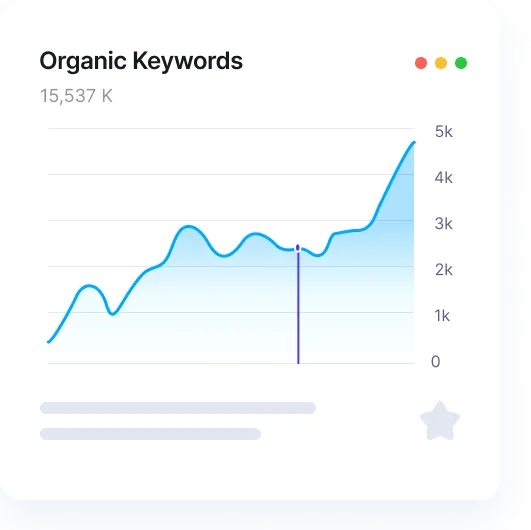

With the new Gemini, or AI overview search results being a prominent and high-value feature, as well as the growing usage of ChatGPT and other AI tools (which are only ever going to grow in popularity), getting your brand to appear in these results will be highly beneficial. But how do you get your brand, products or services to appear in AI search?
The answer lies in ensuring you have a strong brand authority, having an accessible website to search engines and great content that AI models can parse and use in their responses. A lot of these practices are covered under the general term of following great SEO practices.
In theory, it doesn’t change much. Chat GPT uses Bing’s search infrastructure to generate its results, so being visible on Bing, OpenAI’s own web search, and a variety of other major search indexes is key. Gemini uses Google’s search infrastructure for its results, which you can get featured on by following good SEO practices.
The difference lies in targeted searches, trusted sources, and providing AI models with data and great content that they like to parse from. With our AI SEO (or generative engine optimisation services), we can optimise your site to get featured on the new and more direct way to search.
As we’ve established, authority, accessibility and content are key to ranking in AI. However, structuring our content for extraction and synthesis also plays a role. Such methods include:
AI models focus on expert verifiable sources that show expertise, experience, authority and trustworthiness. Which can be further enhanced by:
Search queries are becoming more specific and long tail, so to ensure we show up for these searches, we must tailor our content towards more of these longer tail keywords.
When users go from another website (such as ChatGPT) back to yours, this is called referral traffic and is a traffic channel likely already present in your reporting. The difference in reporting is that we just need to filter this channel to get more in depth analytics, specifically to each tool (ChatGPT, Perplexity etc).
Visibility in Google’s generative features is reported directly in Google Search Console. This data includes valuable information on clicks and impressions from the AI Overview, allowing us to track performance and refine our strategy based on which queries are successfully being cited.

















We consider these generative optimisation techniques to be an essential, integrated component of our modern SEO packages, ensuring your investment is future-proof. This is why AI optimisation is already an integral part of our current SEO packages.
Understand how your goals and market stack up against your current SEO today.
Undertake keyword, market research and formulate a strategy to reach your goals.
Implementing strategy via on-page, off-page, technical SEO, and content uploads.
Live dashboards, ROI analysis, monthly reporting, feedback and strategy refinements.








*Some projects delivered in collaboration with agencies during previous roles.
To understand your current standing and the immediate opportunities for AI visibility, we invite you to schedule a consultation.
Please reach out if you have any further questions.
GEO is the next evolution of SEO. GEO is the practice of optimising content to appear in LLM (language learning models) used in AI overviews, chatbots and AI tools. GEO ensures that when AI synthesises its response, it uses your content as a credible and trusted source.
It is essentially the same, but AI SEO focuses more on citation, rather than ranking (e.g. being mentioned, rather than having a prominent position in the search results).
E-E-A-T is extremely important for normal SEO, and it’s because search engines are cracking on on misinformation across the internet. Search engines and AI models favour content written by experts and verifiable sources. Enhancing your signals will make your content more visible and it’s seen as more trustworthy.
We see AI SEO as the future of SEO. To provide you with a fully future-proof service, we are including AI optimisation in our current SEO packages.
AI is a great tool for ideation and structuring, however, evidence suggests that content written by humans significantly outperforms AI content. Google does allow AI content to rank, but it prioritises human-written content that shows E-E-A-T. Our approach is always original, human-written content that expresses your unique brand voice.
This ROI calculator helps you estimate how much revenue your marketing budget could generate based on your website performance and sales process.
Here’s what each part means:
Monthly marketing budget – How much you plan to spend on marketing (e.g. SEO, PPC, Paid Social).
Website traffic – How many visitors your website gets each month.
Website conversion rate – The percentage of visitors who generate leads or key events (fill out a form, call you, etc). Most websites convert between 2–5%.
Lead-to-sale conversion rate – The percentage of leads or key events that turn into paying customers. This varies by industry, but 10–30% is a common range.
AOV (Average Order Value) – The average amount each customer spends when they buy from you (we use this figure to estimate a profit based on your average customer).
Once you enter your numbers, the calculator shows:
Estimated leads – How many leads your website could generate.
Estimated sales – How many of those leads could convert into customers.
Estimated revenue – How much revenue that could generate.
ROI – Your return on investment, based on your budget and estimated revenue.
Prefer to message? Chat live now in the bottom corner.
Data-driven marketing to elevate the standards of internet marketing.